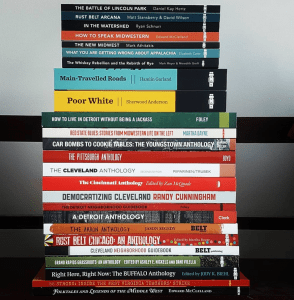By: Kimberly Davis, Blog/Web Editor & Copywriter for The Teaching Press during Spring 2021
In the big wide world of publishing presses, it can be overwhelming for the most savvy of clients (and the most eager of interns) to not only narrow down their options from a professional perspective, but to pinpoint what exactly each and every press does from an organizational one. Although publishing presses can certainly offer their clients and staff with an extremely individualized experience—due to their wide range of services/capabilities, community/literary focus, and even the unique personalities they have on staff—there are undoubtedly similarities that can be detected across the board. So, let’s go on and ahead and get down to business. (The publishing business, that is!)
THE TRADE BOOK PUBLISHERS (THE BIGWIGS!):
Trade book publishers are most likely the type of publishing press that most of us are familiar with. These presses follow the publishing process from start to finish—from the selection process all the way to retail/bookstore/library distribution. In a way, these large scale publishing presses are most known to focus on the consumer appeal of their projects. These books can come in all forms (such as paperback, hard cover, and e-book) and concern a wide, if not all inclusive, range of topics. Publishing through a trade book publisher is considered to be the most ‘conventional‘ or ‘traditional‘ method for clients when it comes to editing, publishing, and distributing their work. Sometimes, independent publishers outsource to these bigger trade book publishers.

______________________________________________
EXAMPLES OF TRADE BOOK PUBLISHERS (‘THE BIG FIVE’):
______________________________________________
SO, WHAT IS THE TEACHING PRESS?
To gain the best understanding of what The Teaching Press is considered to be, it may be best to hear straight from our director, Dr. Rebecca Meacham, herself.
As Meacham states, “The Teaching Press is most like a ’boutique/hybrid’ press. We offer clients our services to layout, edit, and design work; offer feedback and beta readings; and make books. Sometimes, we can print those books in limited editions (ex. 100 copies); sometimes, we create a file for the client to take elsewhere to print. We do not do marketing for all of our books; we do not hold copyright; we do not keep inventory; we do not sell books directly unless they are part of a launch event. We charge clients fees for our services. Our clients’ books, currently, would be termed ‘self-published.'”
However, she adds: “[The Teaching Press is] also like an ‘undergrad/university-affiliated’ press. Core to our identity is the ability for students to learn from, and assume leadership roles in, making books. Our projects and all steps of client engagement, and Teaching Press media and management, are meant to teach both ‘soft’ skills and technical skills. Our mottos, thus, are: ‘Failure is baked in to what our learners do;’ and ‘our clients should not expect competence.'”

Now, although The Teaching Press may align more so with these two categories of publishing presses, there truly is no doubt that we are just as dedicated and eager to offer the best experience we are capable of just like all the rest!
______________________________________________
BIBLIOGRAPHY (& ALSO RESOURCES FOR FURTHER READING!):
THE TRADE BOOK PUBLISHER
https://www.thebalancecareers.com/types-of-book-publishers-2799865
https://www.thebalancecareers.com/what-is-trade-publishing-2800076
______________________________________________
MORE FROM THIS SERIES:



